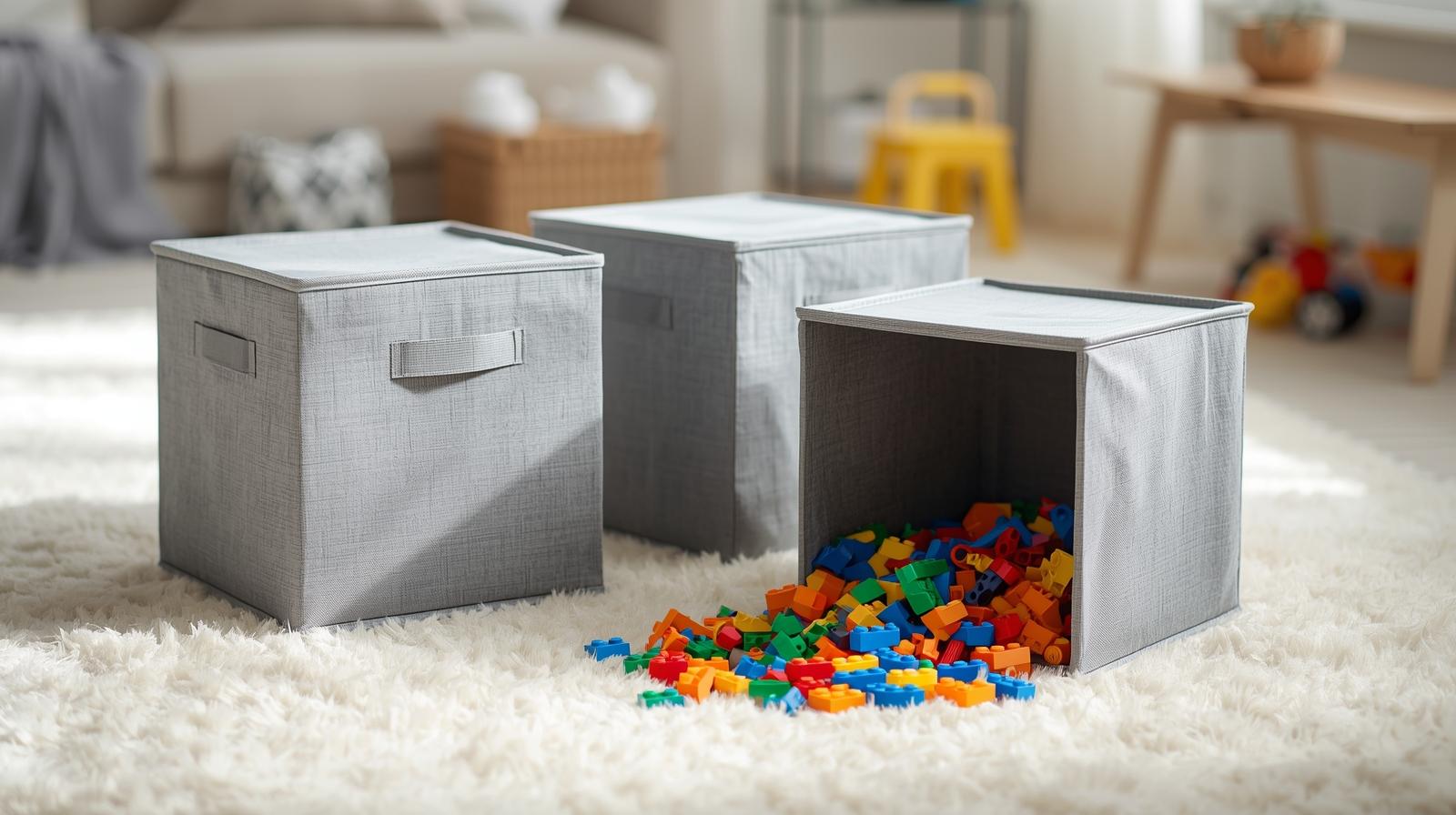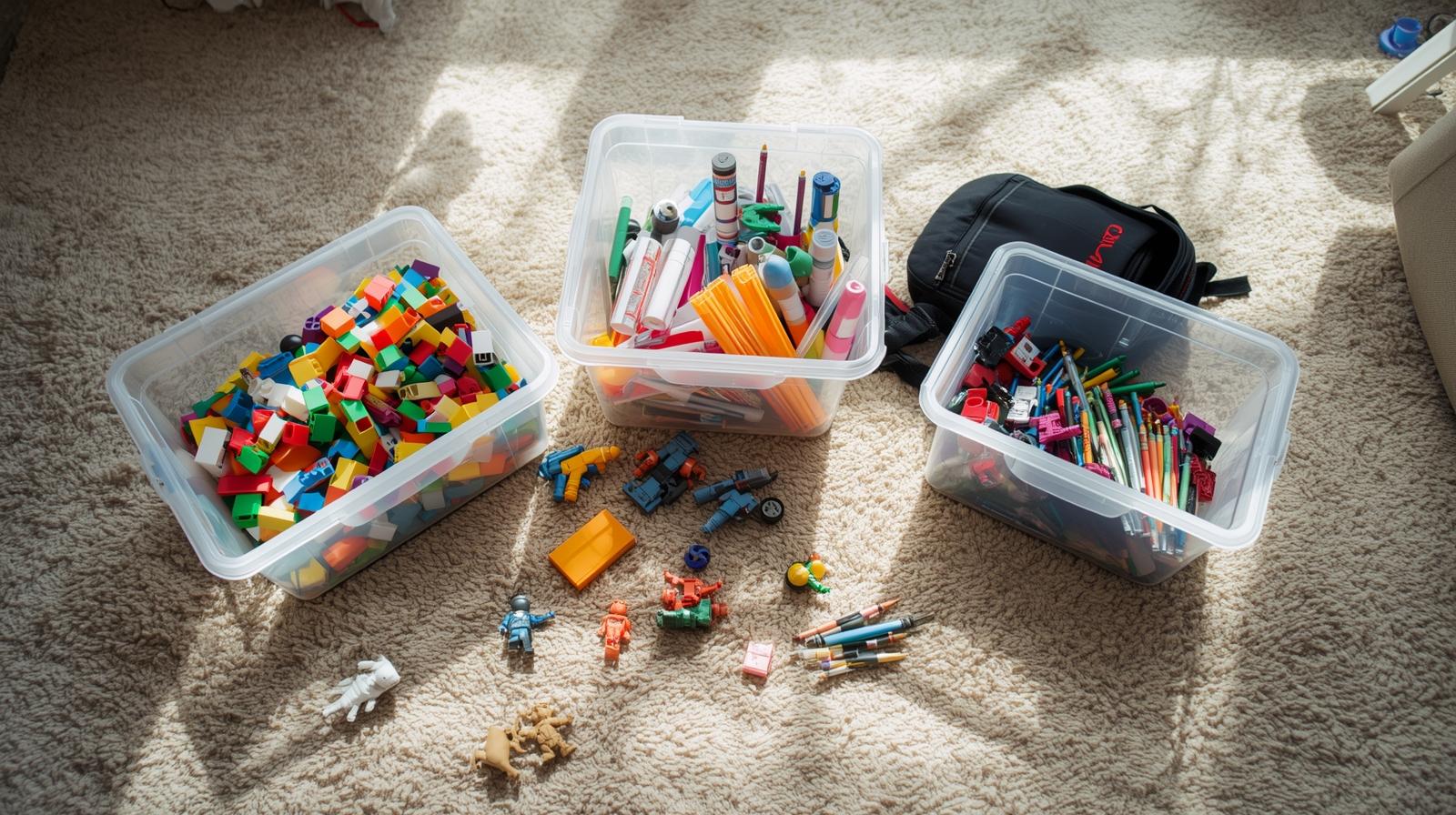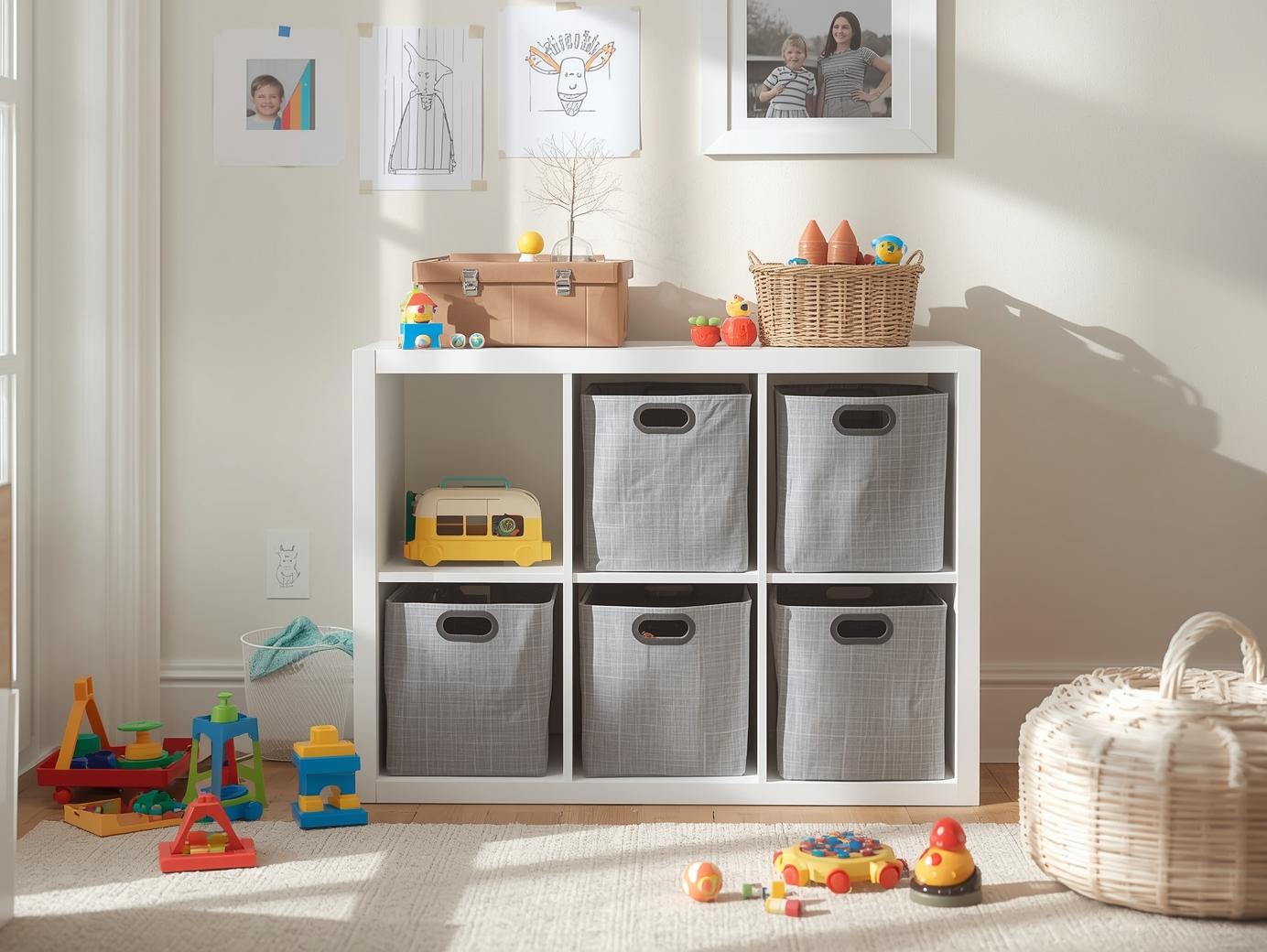I'm about to share something that might sound too good to be true: I found a toy organization system that my 8-year-old and 5-year-old actually maintain themselves.
No nagging. No daily toy pickup battles. No stepping on Legos in the dark.
After trying bins, baskets, elaborate labeling systems, and every Pinterest-worthy playroom idea, I finally cracked the code. The secret? It had to be easier to put toys away than to leave them out.
Here's the $25 system that finally worked in our house.
The $25 Shopping List That Changed Everything
Amazon Find ($12.12 on sale)
Amazon Basics Collapsible Storage Cubes - Gray 6-Pack - $12.12

These 10.5x10.5x11 inch fabric cubes are the perfect size for toys and come in a neutral gray that works with any room. They have sturdy handles and collapse flat when not in use - perfect for rotating toy storage.
Why kids love them: They're soft (no sharp corners), lightweight enough for kids to carry when full, and they can see what's inside through the open top.
Target Additions ($12.98)
Brightroom 3-Tier Drawer Organizer - $9.99
This steel organizer with pull-out drawers is perfect for small toy pieces like Lego minifigures, game pieces, and tiny accessories that always seem to disappear. The three tiers give us enough compartments for different categories.
Brightroom Small Clear Storage Bins - $2.99 each
These clear bins are perfect for daily-use toys that live on the floor. Kids can see exactly what's inside, and they're the right size for little hands to carry.
Total investment: $24.10
The System That Actually Works
The Big 3 Categories
Instead of organizing by toy type (which changes as kids lose interest), I organized by how often toys get used:
1. Daily Players (Clear Bins on Floor)
- Bin 1: Current favorite toys that change weekly
- Bin 2: Building blocks (Legos, Magna-Tiles)
- Bin 3: Art supplies and coloring stuff

2. Weekly Rotation (Amazon Storage Cubes on Shelf)
- Cube 1: Board games and puzzles
- Cube 2: Dress-up clothes and pretend play
- Cube 3: Outdoor toys and sports equipment
- Cube 4: Books and quiet activities
- Cube 5: Building sets and construction toys
- Cube 6: Musical instruments and noise-makers
3. Small Pieces (3-Tier Organizer in Closet)
- Drawer 1: Lego minifigures and accessories
- Drawer 2: Board game pieces and cards
- Drawer 3: Tiny craft supplies and random small toys
The Game-Changing Rules
Rule 1: One cube out at a time If Emma wants to play with dress-up clothes, she has to put away whatever's currently out. This prevents the everything-everywhere explosion.
Rule 2: Daily bins rotate weekly Whatever toys are currently the favorites go in the daily bins. When interest wanes, we swap them out for something from the cubes.
Rule 3: 5-minute pickup before dinner Everything goes back in its designated container. Because the system is simple, this actually works.
Why This System Works for Kids
It's visual: Kids can see what's in each container without reading labels.
It's simple: Only 3 decisions to make—daily toy, weekly toy, or small piece.
It's flexible: The daily bins adapt to whatever they're obsessed with this week.
It's accessible: Everything is at kid height, and the containers aren't too heavy when full.
It makes sense: Toys they use most are easiest to reach.

The Real Game-Changer
This isn't just about having a tidy playroom (though that's nice). It's about teaching kids that organization makes life easier, not harder. When Emma can find her art supplies without asking for help, or Lucas can set up a Lego project without hunting for pieces, they experience firsthand how systems serve them.
Most importantly: This system reduces the daily friction around toys. No more arguments about cleanup time. No more stepping on things. No more "I can't find" requests.
For $25, that's money well spent on reducing daily stress.
What toy area in your house causes the most daily stress? Start there. A $25 investment might just make a real difference in your family's daily routine.

